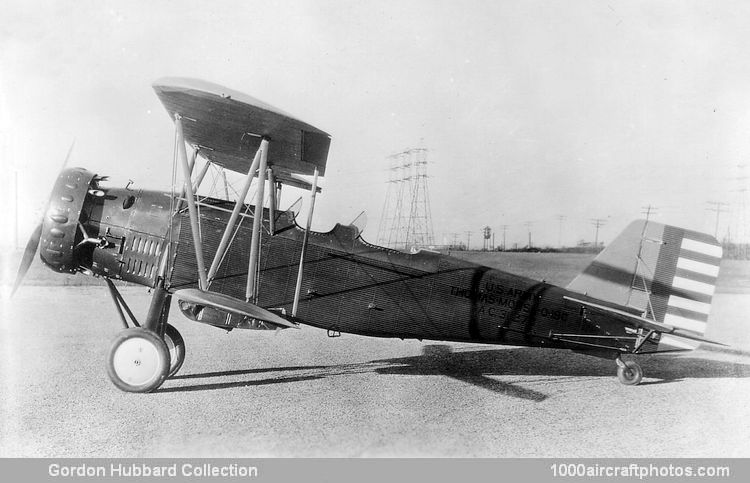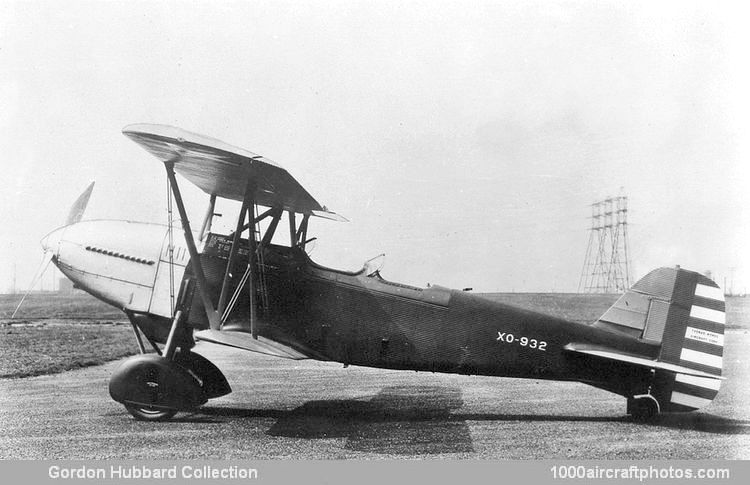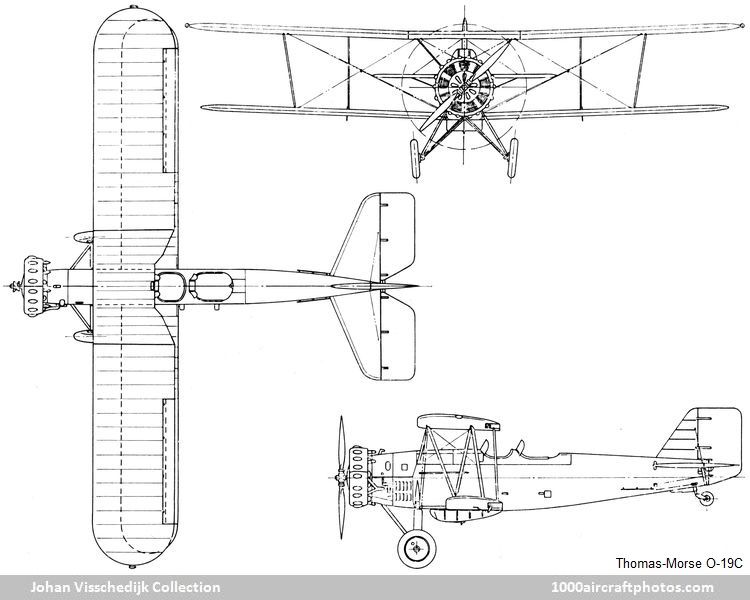05/31/2022. Remarks by Johan Visschedijk: "Nine years of experimentation with all-metal construction finally paid off for the Thomas-Morse Company when orders for 180 O-19s and variants were placed between 1928 and 1931. The Pratt & Whitney R-1340 Wasp-powered O-19 was an improved version of the unofficial XO-6B and featured the same wrap-around corrugated sheet metal fuselage construction that Thomas-Morse had used on all designs since the S-9 of 1919. Wings and fixed tail surfaces were of metal frame construction with fabric covering while movable surfaces were corrugated aluminum sheet.
The initial USAAC order was for four examples. The first was the prototype XO-19 (serial 28-400) with a 450 hp R-1340-3 and 112 gal (424 l) fuel capacity, it made its maiden flight in April 1929. The second was one of only two O-19s, powered by a 500 hp R-1340-9s, serialed 28-401, this was tested at Wright Field, Ohio, under the project number "P-543". The other two had identical airframes to test the suitability of other power plants. Designated YO-20 (28-402) the third was fitted with a 525 hp Pratt & Whitney R-1690-1 Hornet and was tested at Wright Field as "P-561". The fourth was designated XO-21 (28-403) and fitted with a 600 hp Curtiss H-1640-1 Chieftain. As "P-575", this aircraft was also tested at Wright Field. The XO-21 was later re-engined with a 525 hp Wright R-1750-1 Cyclone and became the XO-21A.
Three additional service test aircraft were then ordered. The second O-19 (29-369) and the sole O-19A (28-370) were both fitted with 500 hp R-1340-9 Wasps, while the O-19A had its fuel capacity reduced to only 24 gal (91 l). The O-19 29-369 was written off at Meadowbrook Country Club, Long Island, New York, on June 28, 1929. As "P-569", the O-19A also went to Wright Field. It was damaged in a take off accident at Pope Field, North Carolina, on August 13, 1931. The third test aircraft, designated YO-23 (29-352), was powered by a 600 hp liquid-cooled Curtiss V-1570-1 Conqueror, it was also tested as "P-562" at Wright Field in September 1929.
On August 16, 1929, the first production order was placed for 70 O-19Bs (30-090 to 30-159), differing from the test models in having 450 hp R-1340-7s and new cockpits with later gun mounts than the WW I Scarff mount. A follow-on order was placed on June 12, 1930, for 71 O-19Cs (31-278 to 31-348) with minor refinements and a Townend drag ring around the engine.
In February 1931, the final order was placed for 30 O-19Es (31-523 to 31-552), these were fitted with 575 hp R-1640-15 engines and extended-span upper wings.
The sole O-19D was a hybrid of the second O-19C (31-278) with O-19E wings and engine as well as dual controls. It was operated as a VIP transport for the Secretary of War.
In August 1930, the first O-19B (30-090) was converted to the sole Y1O-33 with revised tail surfaces and a Prestone-cooled 600 hp Curtiss V-1570-11 Conqueror V-engine, replacing the original 450 hp Pratt & Whitney R-1340-7 radial.


